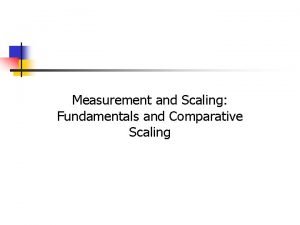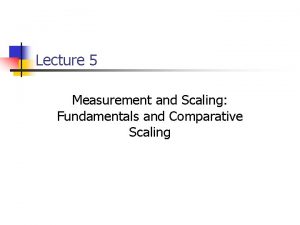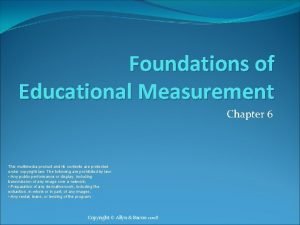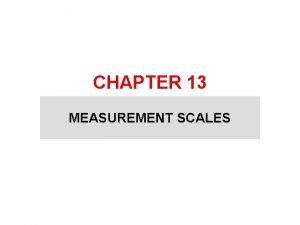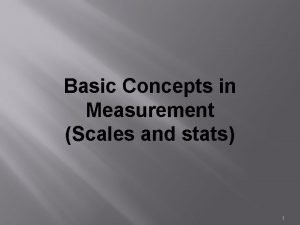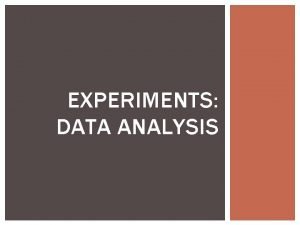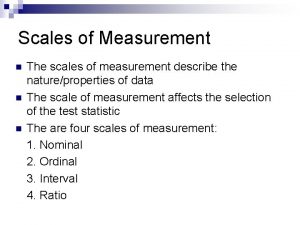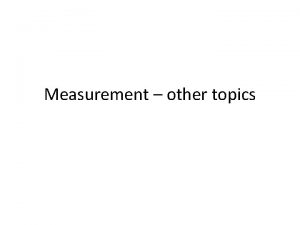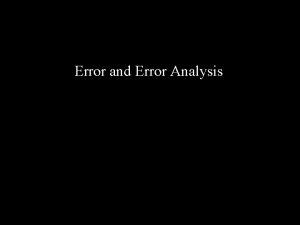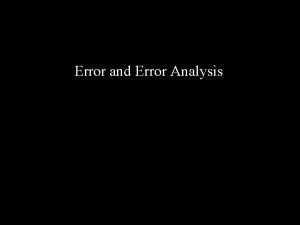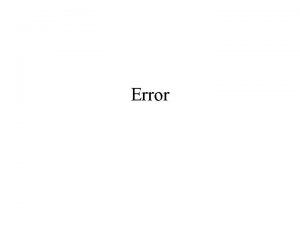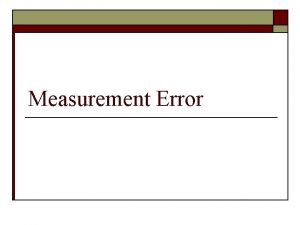Measurement Scales and Error of Measurement Measurement Measurement










- Slides: 10

Ø Measurement Scales and Error of Measurement

Ø Measurement: Measurement is the foundation of any scientific investigation Everything we do begins with the measurement of whatever it is we want to study

Ø Measurement Scales: Four Types of Measurement Scales. 1 -Nominal 2 -Ordinal 3 -Interval 4 -Ratio The scales are distinguished on the relationships assumed to exist between objects having different scale values. The four scale types are ordered in that all later scales have all the properties of earlier scales— plus additional properties

1 -Nominal : Not really a ‘scale’ because it does not scale objects along any dimension • It simply labels objects Gender is a nominal scale Male = 1 Female=2 Religious Affiliation Catholic= 1 Protestant= 2 Jewish= 3 Muslim= 4 Other= 5 Categorical data are measured on nominal scales which merely assign labels to distinguish categories

2 -Ordinal Scale: Numbers are used to place objects in order But, there is no information regarding the differences (intervals) between points on the scale. 3 -Interval Scale: • An interval scale is a scale on which equal intervals between objects, represent equal differences • The interval differences are meaningful • But, we can’t defend ratio relationships Interval relationships are meaningful • A 10 -degree difference has the same meaning anywhere along the scale • For example, the difference between 10 and 20 degrees is the same as between 80 and 90 degrees • But, we can’t say that 80 degrees is twice as hot as 40 degrees • There is no ‘true’ zero, only an ‘arbitrary’ zero.

4 -Ratio Scale: • Have a true zero point • Ratios are meaningful • Physical scales of time, length and volume are ratio scales • We can say that 20 seconds is twice as long as 10 seconds

Definition: Measurement errors occur when the response provided differs from the real value; such errors may be attributable to the respondent, the interviewer, the questionnaire, the collection method or the respondent's record-keeping system. Such errors may be random or they may result in a systematic bias if they are not random.

Types of Errors in Measurement The error may arise from the different source and are usually classified into the following types. These types are 1 -Systematic Errors 2 -Random Errors

1. Systematic Errors The systematic errors are mainly classified into three categories. (i)Instrumental Errors (ii)Environmental Errors (iii)Observational Errors

2. Random Errors: The error which is caused by the sudden change in the atmospheric condition, such type of error is called random error. These types of error remain even after the removal of the systematic err
 Types of measurement scales
Types of measurement scales Nominal ordinal scale
Nominal ordinal scale Scales of measurement
Scales of measurement Types of scales in educational measurement
Types of scales in educational measurement Marketing research measurement scales
Marketing research measurement scales Scale data
Scale data Measurement scales in research
Measurement scales in research Primary scales of measurement in marketing research
Primary scales of measurement in marketing research Types of measurement scales
Types of measurement scales 4 measurement scales
4 measurement scales What are the 4 measurement scales?
What are the 4 measurement scales?

